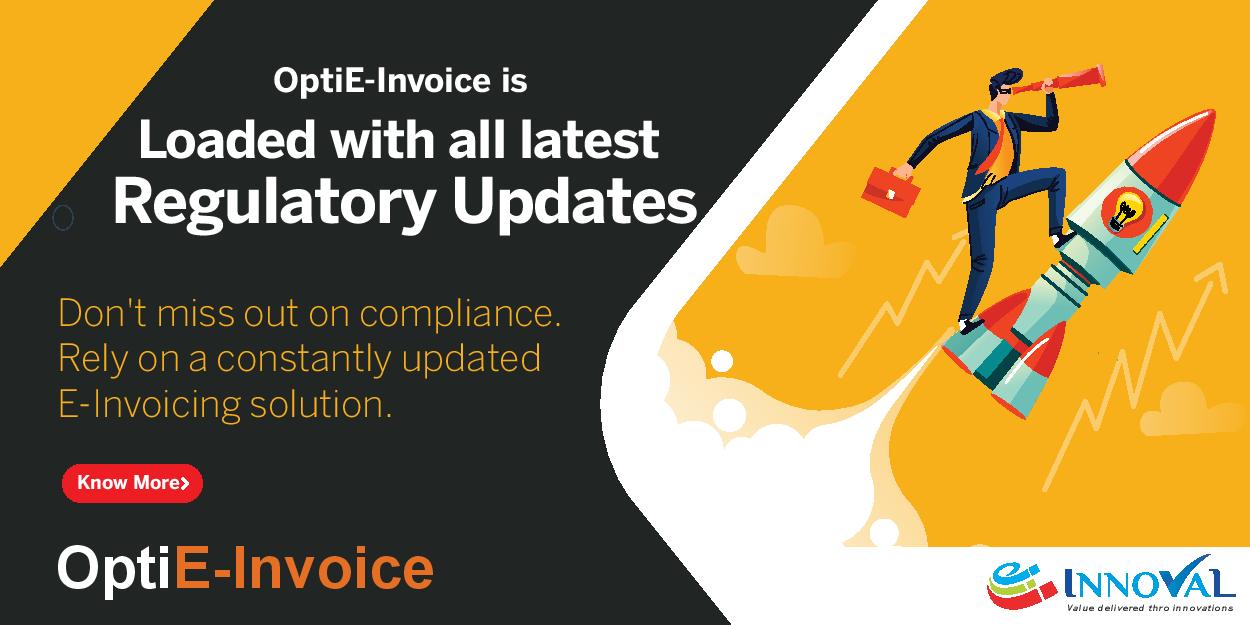Steps in e-Invoice generation
The seller generates Invoice in ERP/Accounting software
- This data needs to be converted to a JSON format and uploaded to the IRP portal
- The IRP receives this information and crosscheck whether the invoice is already registered or not.
- A unique number called IRN (Invoice Reference Number) will be generated if not registered already.
- Rejects the data if already registered
- IRP return a digitally signed JSON and QR code containing the IRN back to the seller
- The registered Invoice data will be shared with GST eco system (GSTN and E-Way Bill portals)
- In the GSTN portal and E-Way Bill portal , a de-duplication check will happen to ensure that the same information is not stored earlier
- This data will get auto-populated in the ANX-1 of the supplier as well as in the ANX-2 of the buyer

Digitally signed QR Code
The QR code will contain the unique IRN (hash) along with some important parameters of invoice and digital signature so that it can be verified on the central portal as well as by an Offline App. This will be helpful for tax officers checking the invoice on the roadside where Internet may not be available all the time. Authenticity of the QR code can be validated using the digital signature.
- JSON Web Token (JWT) and JSON Web Signature (JWS) are used to sign the invoice.
- JWS is a compact signature format for representing signed content using JSON data structures. It contains Header, Payload and Signature.
- Signing Algorithm SHA256RSA.
- The public key to verify signature will be provided by GSTN
The QR code will consist of the following e-invoice parameters:
- GSTIN of supplier
- GSTIN of Recipient
- Invoice number as given by Supplier
- Date of generation of invoice
- Invoice value (taxable value and gross tax)
- Number of line items.
- HSN Code of main item (the line item having highest taxable value)
- Unique Invoice Reference Number (hash)
Guidelines for e-invoicing
E-Invoice timelines are notified based on the previous financial year turnover of the company.
- Turnover greater than 500 Cr can voluntarily start e-invoice from 1st January 2020 and mandatorily from 1st October 2020
- Turnover greater than 100 Cr to 500 Cr can voluntarily start e-invoice from 1st February 2020 and mandatorily from 1st October 2020
- Turnover less than 100 Cr can voluntarily start e-invoice from 1st October 2020
Only the following types of the document need to be considered for the generation of IRN.
- Invoices – Normal & Export
- Debit Note
- Credit Note
- For the below cases e-invoice registration is not required
- Delivery challan
- Bill of Supply
- Job works
E-Invoice request should be made only for the following category of transactions
- Business to Business(B2B) invoices
- Business to Government (B2G) invoices
- Business to Export invoices
- Reverse Charges invoices
- Supplies through e-Commerce Operator
In case of exports the below segregation to be maintained as whether the transaction is a
- Direct export
- Deemed export
- Sales to SEZ (Special economic zone)
- Sales to SEZ Developer
Cancellation of generated IRN is possible. But the cancelled invoice should be reported to IRN within 24hours of generation, else the cancellation to be manually handled in the GSTN portal before the filing of returns. There is no partial cancellation of invoices.
[Continued…]
Share this Post











